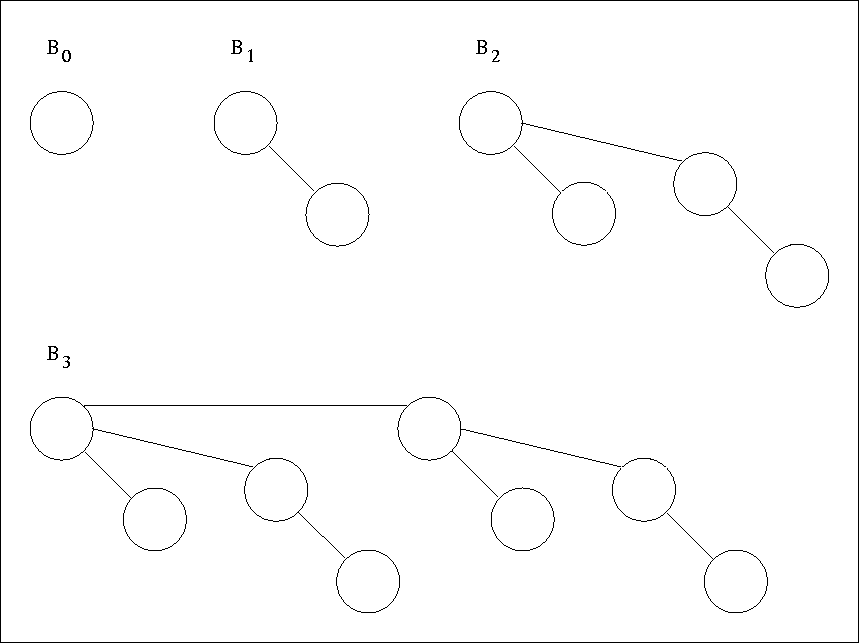


Next: 6.2.1 Binomial Queue Operations
Up: 6. Priority Queues
Previous: 6.1.2 Creating Heap
- REF.
- Jean Vuillemin. A data structure for manipulating priority queues.
Communications of the ACM, Volume 21, Number 4, pp.309-315, 1978.
- REF.
- Mark R. Brown. Implementation and analysis of binomial queue algorithms.
SIAM Journal on Computing, Volume 7, Number 3, pp. 298-319, 1978.
- Support merge, insert, and deletemin operations in
O(log n) worstcase time.
- A binomial queue is a forest of heap-ordered trees.
- Each of the heap-ordered trees is of a constrained form
known as a binomial tree.
Figure 6.5:
Examples of Binomial Trees
 |
- A binomial tree of height 0 is a one-node tree; A binomial
tree Bk of height k is formed by attaching a binomial tree
Bk - 1 to the root of another binomial tree, Bk - 1.
- See Figure 6.5 for an example of binomial tree.
- A binomial tree Bk consists of a root with children B0,
B1, ... Bk - 1.
- Bk has exactly 2k nodes.
- Number of nodes at depth d is kCd
- If we impose heap order on the binomial trees and allow at most
one binomial tree of any height, we can uniquely represent a priority
queue of any size by a forest of binomial trees.
- Example: A priority queue of size 13 could be represented by the
forest B3, B2, B0. A natural way of writing this is:
1101. See Figure 6.6 for a binomial queue with six elements.
Figure 6.6:
A binomial queue H1 with six elements
 |



Next: 6.2.1 Binomial Queue Operations
Up: 6. Priority Queues
Previous: 6.1.2 Creating Heap
eEL,CSA_Dept,IISc,Bangalore